This article is going to explain about the NetApp clustered DATA ONTAP’s physical objects and virtual objects. Physical elements of a system such as disks, nodes, and ports on those nodes―can be touched and seen. Logical elements of a system cannot be touched, but they do exist and use disk space. For the NetApp beginners , the initial Netapp series articles might looks difficult to understand the concept and architecture but once the LAB guide starts, they can slowly grab the things .
Physical elements:
- Nodes
- Disks
- Network Ports
- FC ports
- Tape Devices
Logical elements:
- Cluster
- Aggregates
- Volumes
- Snapshot Copies
- Mirror relationships
- Vservers
- LIFs
[box type=”info” align=”” class=”” width=””]Volumes, Snapshot copies, and mirror relationships are areas of storage that are divided from aggregates. Clusters are groupings of physical nodes Vservers are virtual representations of resources or groups of resources. A LIF is an IP address that is associated with a single network port.[/box]
The below digram shows the typical clustered ONTAP’s two cluster setup.
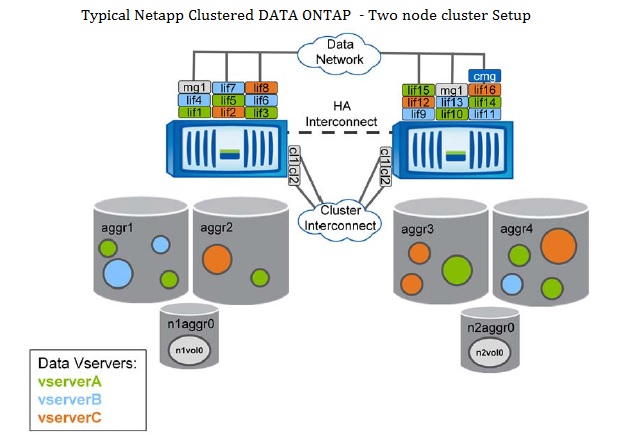
Virtual Storage Server (vServer):
vServer represent grouping of physical and logical resources . This is similar to vFilers in 7 Mode. There are three types of Vservers. Data Vservers are used to read and write data to and from the cluster.Node Vservers simply represent node-scoped resources, and administrative Vservers represent entire clusters.
- Administrative vServers
It represents a cluster (group of physical nodes) and it will be associated with cluster management LIF.
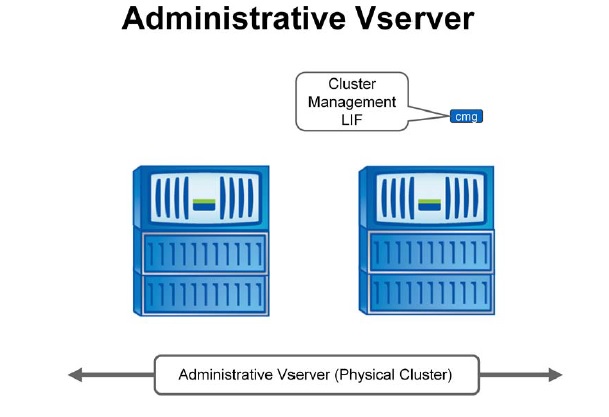
- Node vServers
It represent each physical Node. It will be always associated with cluster LIF , node Management LIF and interconnect LIFs
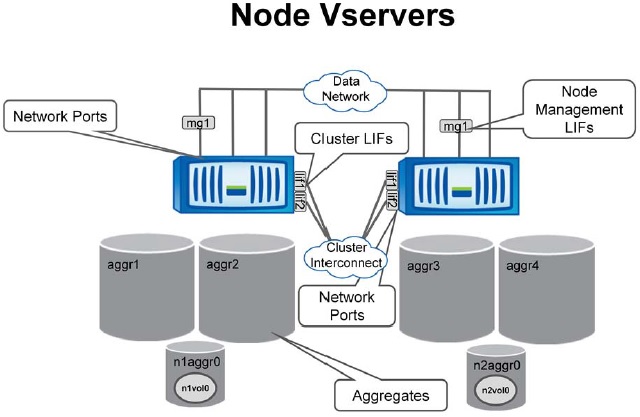
- Data vServers
Data vServers are a virtual representation of a physical data server and it will be associated with data LIFs. It will not associated with any single node. It contains following resources within it.
- Namespace
- Volumes
- Data LIFs and Management LIFs
- Protocol Servers (NFS,CIFS,iSCSI,FC,FCoE)
- Infrastructure Services (NIS, DNS, LDAP, kerberos, NTP)
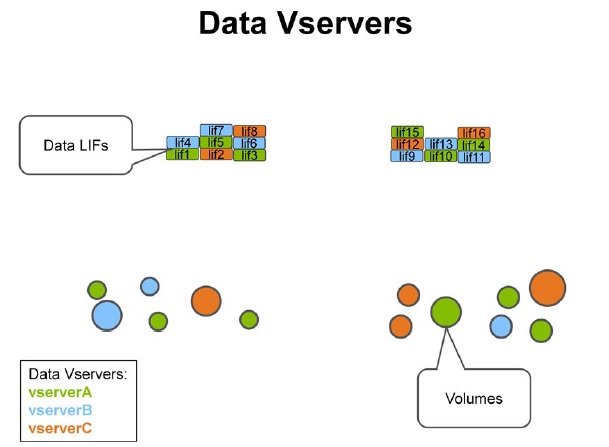
Let’s combine all the above vServers in to one. In the upcoming articles , we will be configuring all the elements manually starting from the cluster setup, vServers , LIFs etc..
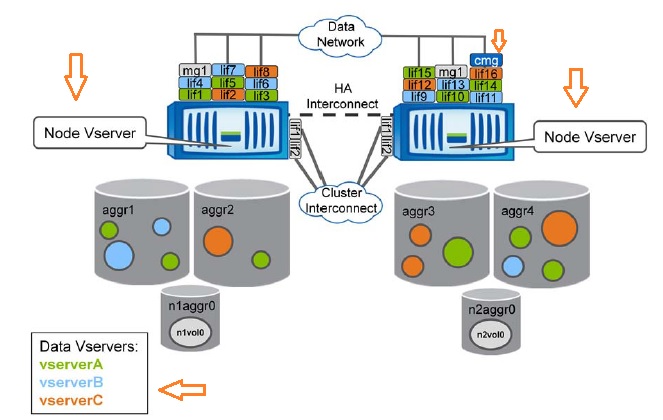
Hope this article is informative to you. Share it ! Comment it ! Be Sociable !!!
Leave a Reply